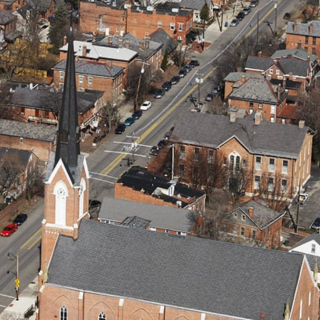It was worth the long wait this past Saturday morning at Trinity Baptist Church on the Eastside for those with way too many guns on their hands. The City was buying any gun a citizen had to offer – even 3D printed guns, which are illegal – with no questions asked. Some of these same citizens walked away with hundreds, and in some cases, thousands-of-dollars’ worth of gift cards from the City.
“It took me about three hours to get to where the police were,” said a source who did want to offer his name for publication. He lives outside Columbus and walked away $2,000 richer. “I went right to the gun store and bought some more guns.”
The City was offering up to $750 per gun, and the source told us he was able to get a gift card for a 3D printed gun. He had not printed and assembled the gun just for this buyback, but it’s certainly possible other sellers had done so. The City bought 344 guns for $136,600.
Before the buyback Mayor Andrew Ginther touted its potential for success.
“This will be one of our biggest buybacks ever,” he told NBC4.
Ginther attended the buyback and spoke to most major local media. With just over month to go before facing off against Mayoral candidate Joe Motil, the timing of the buyback is suspect.
The anonymous source witnessed a sawed-off shotgun being handed over. “You commit a crime with a sawed-off shotgun and that’s an automatic extra 10 years,” he said. One reason being is because a sawed-off shotgun can be easily hidden from view, he said.
The gun buyback may become an annual event when it should already be a weekly event. Crime has gripped Columbus since the height of pandemic, this isn’t hyperbole. At the end of 2020, sources within the Columbus Division of Police told the Free Press it may be because of its “Covid response” protocols.
But the mayhem has continued. When her organization Columbus Stand Up! was hosting events in city neighborhoods throughout 2021, Morgan Harper told the Free Press much of what she heard was fear.
Homicides and car thefts broke records for Columbus in 2021 and 2022. A shocking number of teens and younger people were part of the nightmare. Black activists from the Ohio Coalition to End Qualified Immunity – some being matriarchs of large families – said they were hearing this terrible mantra: “If the police can kill, then I can too.”
Absurdity coupled with a disconnect from reality has become the norm. A TikTok video (by a white person) showing how an android charger can easily hotwire a Kia has made the video game Grand Theft Auto come to life for children, but the reality is innocent life has been silenced. More insane is how gun violence has become the leading cause of death for young people.
Columbus mayoral candidate Joe Motil stated that, "The reality is that the answers to gun violence in Columbus are, contrary to Mayor Ginther’s belief, not going to be found in a minuscule number of firearms bought back off of law-abiding citizens. The answers are also not going to be found in throwing blame towards the statehouse and parents. The answers will instead be found in long term social, economic, and educational investments in our youth, families, and neighborhoods: appropriate prosecution and consequences by our judges and prosecutors for violent offenses; no more ignoring non-violent offenses; supporting law enforcement, community policing, and programs that utilize private residential citizen-owned cameras to monitor high crime areas; street level crime prevention programs that utilize respected community mentors who work directly with our youth; and more emphasis on eliminating drug trafficking. These are ways that will help."
At this point, any ideas and actions to curb the violence are welcomed. Eastside affordable housing activist Jonathan Beard offered suggestions to City officials through email, and we reprint his ideas here.
A few years back when Beard was helping to revitalize East Main Street’s approach to downtown as CEO of the Columbus Compact Corporation, he took it upon himself to take on the open-air drug markets.
“I put together a network of low light, pan-tilt-zoom wifi connected cameras so I could see what was happening after I went to bed every night, and by reviewing tapes in the mornings I came to better understand the people and patterns of violence,” wrote Beard in those emails.
Beard put together a plan with other neighborhood stakeholders. One idea called for City Council to amend the City’s “Loitering in aid of drug offenses law,” which the police and city attorney had both told Beard was unconstitutionally vague and thus unenforceable.
But the cameras were able to expose who was selling and who was buying. Videos were sent to City Council, and Beard and neighborhood stakeholders began telling dealers to move on, which they reluctantly did (after some serious cussing).
“We partnered with the neighborhood association on a local liquor option. We got a couple of the young guys warehouse jobs. We partnered with a church to do weekly community cookouts on a lot we owned,” wrote Beard. “We became familiar by face and name with the dope boys, taking away their coveted anonymity – and we took back the streets and made them safe.”
Beard added, “Everybody participated but City Council – who wouldn’t do its job.”



